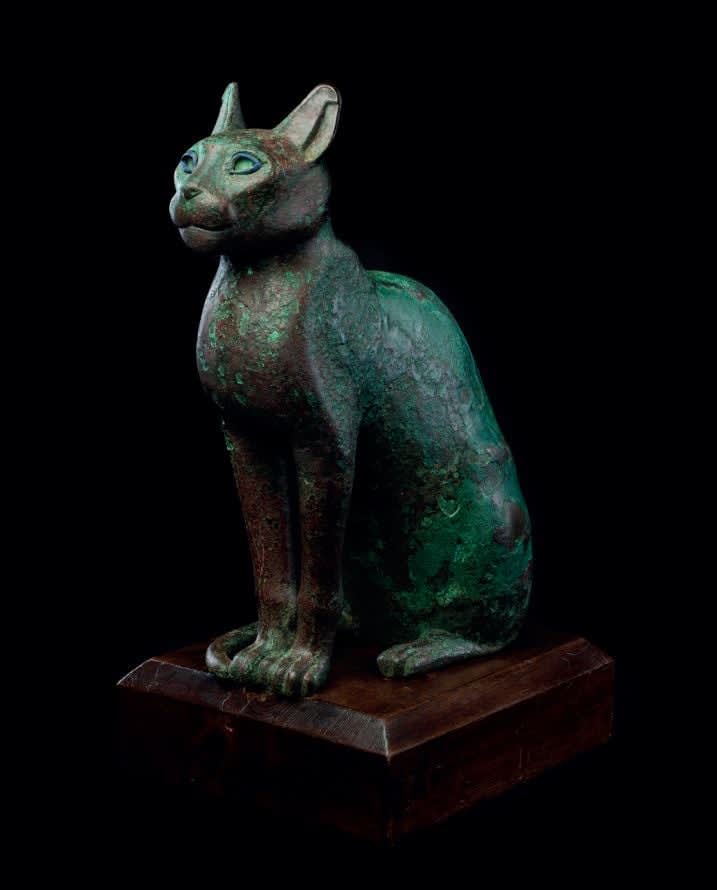-
Artworks

Antiquity
Egyptian Cat, c. 332-30 BCBronze Sculpture with lapis-lazuli
Ptolemaic PeriodH: 37.3 cmIn excellent condition, with minor clay residues left on the interior from casting in antiquity. The interior has also been consolidated with clear acrylic. The bronze surface has a fine green-blue patina. There are minor infills on the right shoulder and tip of the left ear.The cat is life-sized and hollow cast, and elegantly proportioned with naturalistic details. It is depicted seated with forepaws together, with the long tail curving forward around the proper right side. The head features alert erect ears, and recessed almond-shaped eyes with blue lapis lazuli inlays defining the rims. The remains of an incised broad collar are visible on the back of the neck, with a rectangular tenon below. A remarkable example of the type, exceptionally cast. The life-sized scale is unusual and adds to the object’s importance, as most surviving bronze cats of this period are smaller. The body is carefully and realistically rendered, giving a sense of the artist’s understanding of the cat’s physiognomy. The survival of the lapis lazuli inlays around the eyes is exceedingly rare. A similarly modelled cat in the Louvre, Paris, though a little smaller in scale, retains blue inlays around the eyes but they are of glass, not lapis lazuli. The cat was held in high importance in Egypt. Domesticated in the Middle Kingdom, from the Late Period onwards, they had become sacred to the goddess Bastet, one of the major gods in the ancient Egyptian pantheon and goddess of protection, pleasure, and the bringer of good health, the benign counter-point to her fierce sister, the lioness goddess Sekhmet. Her major cult centre was at Bubastis in the eastern Delta, and the remains of thousands of mummified cats have been discovered both there and at another of her major sites at Saqqara. These cats were often preserved in wooden or bronze coffins, or in more elaborate hollow bronze statues, such as this one. They were then given as offerings or used as focal points for worship. This museum-quality artwork has been held by the same family for almost 100 years, and photographs dating from circa 1925 show the object displayed amongst the family’s other treasures, mounted on the same wooden mount as today.Provenance
In a distinguished Private Collection, Alexandria, Egypt, from at least the 1920s
With photographs of the cat in the family villa taken around 1923.
Thence by continuous descent within the family.
1of 3
What do you collect
We regularly add new artworks to our collection and would love to share these with you. Please let us know your favourite artsists and interests:
* denotes required fields
We will process the personal data you have supplied to communicate with you in accordance with our Privacy Policy. You can unsubscribe or change your preferences at any time by clicking the link in our emails.
